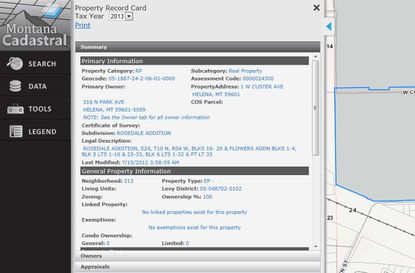
As home values increase nationwide, property taxes are also on the rise.
When you purchase through links on our site, we may earn an affiliate commission. Here’s how it works.

Many homeowners have seen their property values shoot up. If you are envisioning big proceeds when you sell your house, rising home prices are a cause for celebration.
However you may not feel like popping the champagne when you get your property tax bill. As home prices climb, property taxes follow suit. Your tax bill is determined by multiplying your home’s assessed value by the local tax rate.
Homeowners will see higher taxes as localities reassess property values, although the pain should ease as price appreciation slows. And keep in mind that local tax rates affect your bill, too. If your municipality lowers rates to provide relief or stay within required levels, your bill may fall or show only a modest increase.
But if your property taxes have increased significantly, you may have grounds for an appeal, particularly if the increase seems out of line with overall appreciation in your area.
Here are steps to get you started if you plan to appeal your property tax bill.

Schedules vary, but local governments commonly send assessment notices to homeowners in the first few months of the year. As soon as you get yours — or even before — check the deadline for challenging the value. You may have just a few weeks. And be sure you know how your locality assesses property.
Some set the tax assessment at a percentage of market value, 80%, for example, so don’t feel smug if you get a $90,000 assessment on a home you think is worth at least $100,000. Everyone in your jurisdiction should get the same treatment.
Depending on how frequently your community reassesses home values, you may not see a sizable increase in your tax bill right away. Some areas refresh values annually, while others do so every other year or every few years.

When you get your property tax bill, check it for your tax rate, assessment figures and payment schedule, and make sure that all the reductions you’re entitled to are itemized.
Some states allow anyone who owns and lives in a primary home to shield a portion of its value from taxation. You may be eligible for credits based on your income or status as a senior citizen, veteran or disabled person. In Florida, for example, all homeowners are eligible for a homestead exemption of up to $50,000; those 65 and over who meet certain income limits can claim an additional $50,000.
Other tax breaks come in the form of freezes or deferrals. In Arizona, homeowners age 65 or older who have lived in their primary home for at least two years and meet income limits can have their property’s valuation frozen for three years.
Rebates and other property tax breaks aren’t automatic: you usually have to apply for them and show proof of eligibility. Contact your state’s department of taxation or visit its Web site to see what breaks are available to you.

Check your property’s record card. You can often verify it on your locality’s website, although in some jurisdictions you may have to go to the assessor’s office to view property cards or request to receive the information by e-mail or fax.
This record is the official description of your house and if you see an outright error — say, four bedrooms and three-and-a-half bathrooms for your two-bedroom bungalow, for example, the assessor may fix the problem on the spot, reduce the assessed value and your tax bill. That will save you the trouble of a formal appeal.

Comparing your property to similar ones in your neighborhood can help determine whether you have a solid case.
Pull up property cards of several homes of similar age and square footage and with the same number of bedrooms and bathrooms to see how their assessments line up with yours.
Search in your area for recent sale prices of homes similar to yours on a website such as Zillow or Realtor.com. Any sales in the past few months may have taken place after your assessor’s latest property evaluation.

If you find that your assessed value is considerably higher than several similar homes or that sale prices of nearby homes suggest that your property’s value is lower than estimated, you may have grounds for appeal. But even if your assessment falls into the middle of the pack, it’s not necessarily fair.
Maybe your house has a leaky basement or lousy grading that doesn’t allow you to have a garden. The assessment should be based on the market value of your home; if your place has issues that would turn off buyers, now’s the time to own up to them.

If you don’t have time, or the stomach, to handle things yourself, hire a professional to do the legwork for you. A professional appraiser can provide the strongest evidence of your property’s worth. If your community allows outside appraisals — and you are willing to spend at least $250 — find an appraiser with national certification, such as through the Appraisal Institute or the American Society of Appraisers.
However, don’t fall for solicitations from law firms or other services saying they will assist you in return for a high percentage of the savings on your bill.
If you need added incentive to bring a skeptical eye to your real estate appraisal, remember this: A successful appeal can be a gift that keeps on giving, year after year.